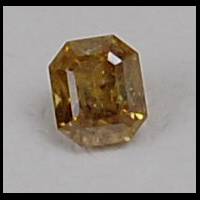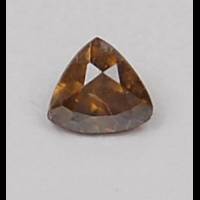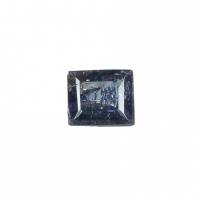Anatase

Brazil
6.25 carats
© Rarestone.com
Anatase is polymorphous with rutile and brookite. It is very similar to rutile in lustre, hardness and density, but differs in its crystal habit and cleavage. When exposed to high temperature anatase transforms into rutile.
Rare transparent specimens are faceted into brilliant gems.
Anatase Gemstones by Colour
This table shows the variety of hues this gemstone can be found in. Click on a photo for more information.
Anatase Gemstones by Size
This table shows distribution of Anatase gemstone sizes that are listed on this site. This can give a good indication as to the general availability of this gemstone in different sizes.
Contributed photos
Lightest:0.19 cts
Heaviest:6.25 cts
Average:1.30 cts
Total photos:6
Do you have a larger Anatase? Why not upload a photo?
| General Information | |||||||
|---|---|---|---|---|---|---|---|
| Other Names/Trade Names: | |||||||
| Chemical Formula |
| ||||||
| Physical Properties of Anatase | |||||||
| Mohs Hardness | 5.5 to 6, Blue Chart Gem Identification (2010) More from other references | ||||||
| Specific Gravity | 3.82 to 3.97, Blue Chart Gem Identification (2010) More from other references | ||||||
| Cleavage Quality | Perfect, Gemstones (2009) | ||||||
| Fracture | Sub-Conchoidal, Gemstones (2009) | ||||||
| Heat Sensitivity | Sensitive, Gemstones (2009) | ||||||
| Optical Properties of Anatase | |||||||
| Refractive Index | 2.488 to 2.562, Blue Chart Gem Identification (2010) More from other references | ||||||
| Optical Character | Uniaxial/-, Blue Chart Gem Identification (2010) More from other references | ||||||
| Birefringence | 0.073, Blue Chart Gem Identification (2010) DoublingMore from other references | ||||||
| Pleochroism | Orange/brown stones - distinct: yellow - orange, Blue Chart Gem Identification (2010) | ||||||
| Dispersion | Ord - 0.213 to Ext - 0.259, Gemstones (2009) | ||||||
| Colour | |||||||
| Colour (General) | Dark brown, colourless, yellow, blue, reddish, black., Gemstones of the world (2001) More from other references | ||||||
| Transparency | Transparent,Translucent, Blue Chart Gem Identification (2010) More from other references | ||||||
| Lustre | Adamantine, Gemstones of the world (2001) More from other references | ||||||
| Fluorescence & other light emissions | |||||||
| Fluorescence (General) | Inert, Blue Chart Gem Identification (2010) | ||||||
| Crystallography of Anatase | |||||||
| Crystal System | Tetragonal, Blue Chart Gem Identification (2010) More from other references | ||||||
| Habit | Usually as bipyramids, Gems, Sixth edition (2006) More from other references | ||||||
| Geological Environment | |||||||
| Where found: | Anatase results from the alteration of other titanium-bearing minerals and is also found in hydrothermal veins., Gems, Sixth edition (2006) | ||||||
| Further Information | |||||||
| Mineral information: | Anatase information at mindat.org | ||||||
| Significant Gem Localities | |||||||
| |||||||





